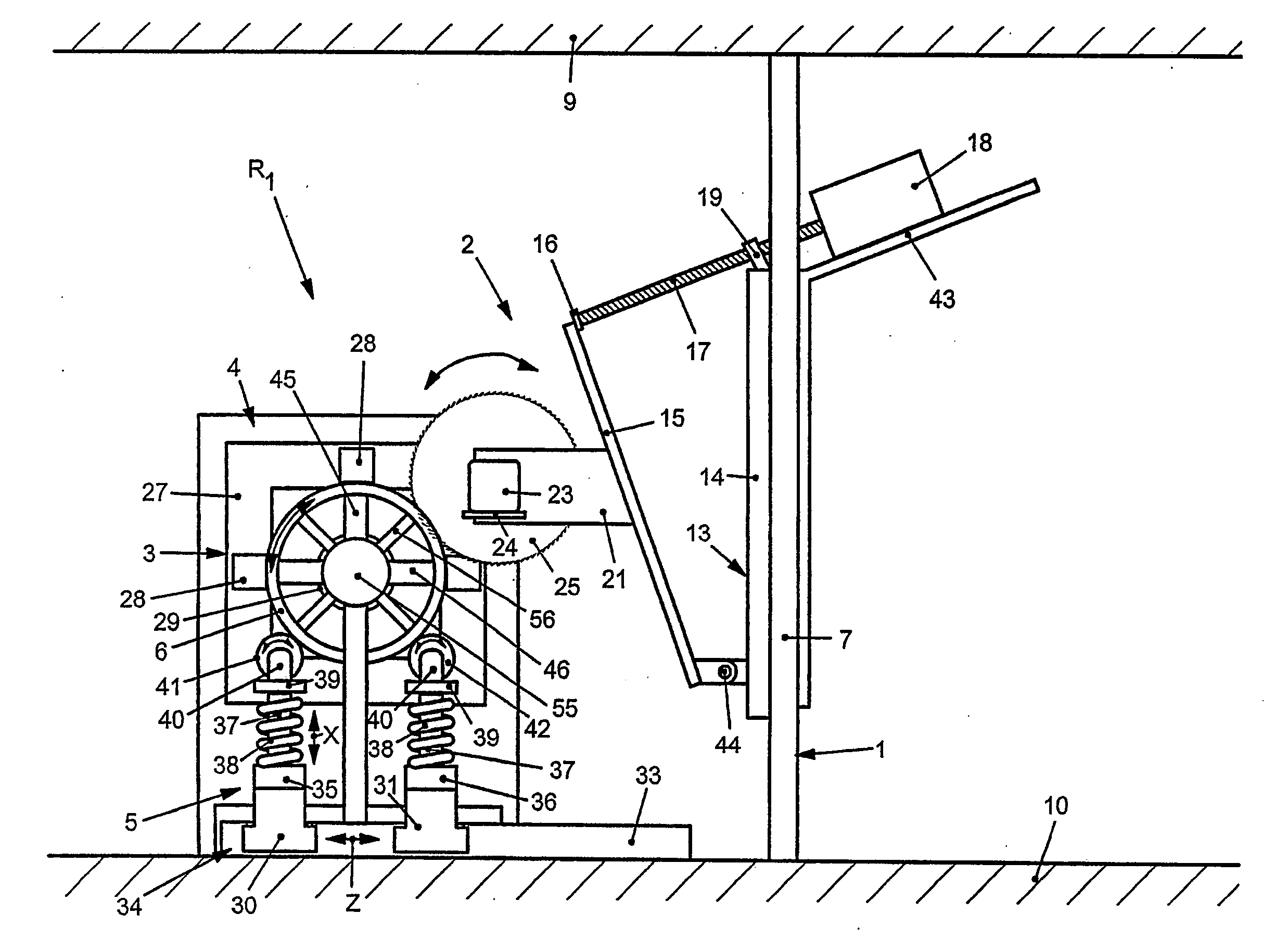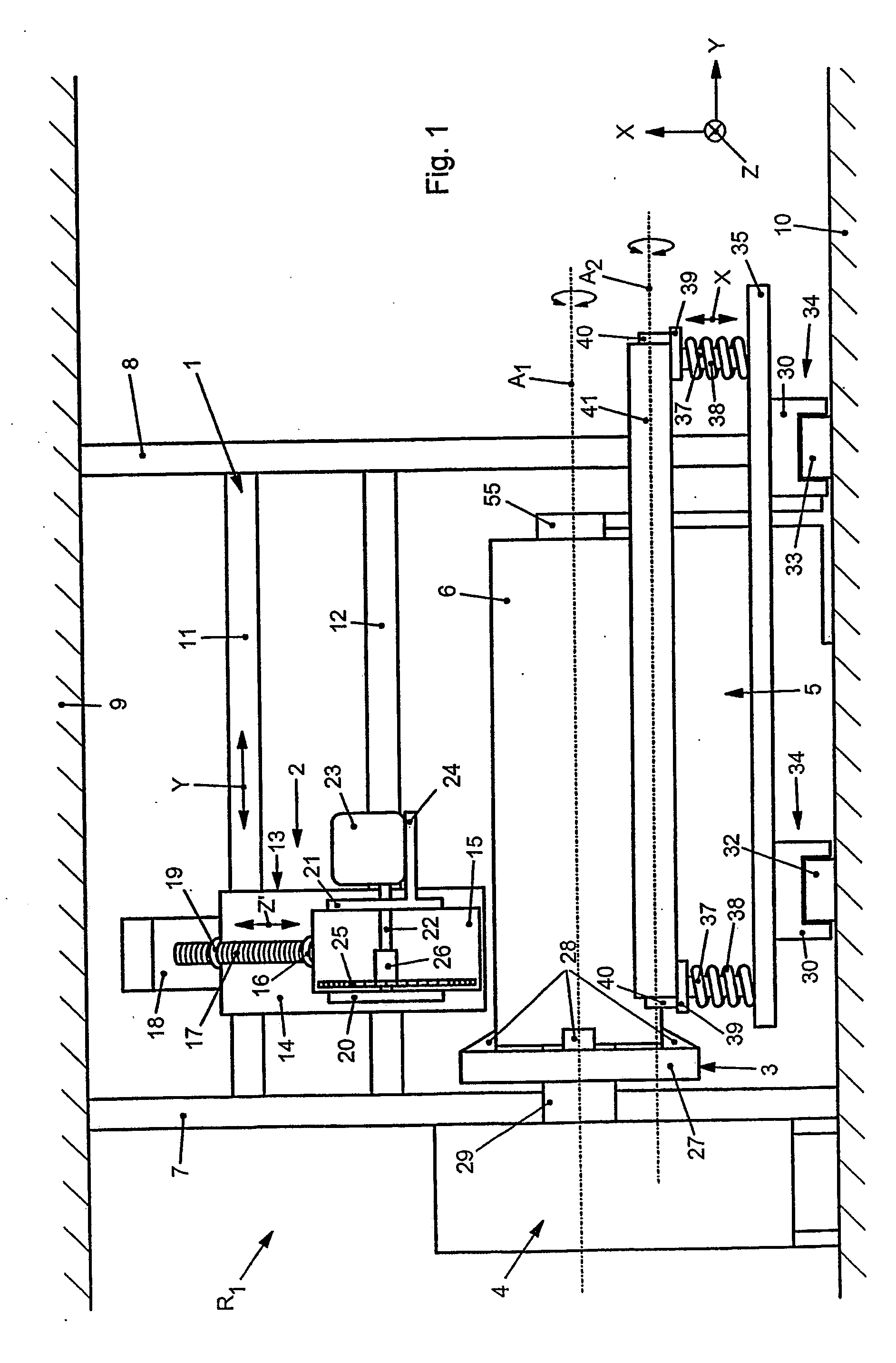Method for separating work pieces
a workpiece and workpiece technology, applied in metal sawing devices, tube shearing machines, metal sawing apparatuses, etc., can solve the problems of insufficient parallelism on cut-through workpieces without further finishing work, change in cut shape, and insufficient surface roughness, so as to reduce the development of heat, and reduce the diameter of the saw blade.
- Summary
- Abstract
- Description
- Claims
- Application Information
AI Technical Summary
Benefits of technology
Problems solved by technology
Method used
Image
Examples
Embodiment Construction
[0029] According to FIG. 1, an apparatus R1 has a machine frame 1, on which a sawing device 2 is movably arranged, and also a clamping device 3 with a driving device 4 and a receiving device 5 for a workpiece 6. Here, the workpiece 6 is a singly or multiply forged copper bush.
[0030] The machine frame 1 comprises two side supports 7, 8, which butt with their respective ends against a ceiling 9 and a base 10. Arranged between the two supports 7, 8 are at least two cross members 11, 12.
[0031] Arranged on these cross members 11 and 12 is a compound slide 13 of the sawing device 2, which has a base plate 14 and a plate 15 pivotably mounted on it. The compound slide 13 can be made to move with respect to the cross member 11, 12 in a Y direction and is also mounted in such a way that it can be fixed in a desired position.
[0032] The plate 15 has on its upper side a guide 16, into which one end of an infeeding device 17, in particular a spindle, enters. The other end of the spindle 17 is ...
PUM
| Property | Measurement | Unit |
|---|---|---|
| rotary movement | aaaaa | aaaaa |
| diameter | aaaaa | aaaaa |
| speed | aaaaa | aaaaa |
Abstract
Description
Claims
Application Information
 Login to View More
Login to View More - R&D
- Intellectual Property
- Life Sciences
- Materials
- Tech Scout
- Unparalleled Data Quality
- Higher Quality Content
- 60% Fewer Hallucinations
Browse by: Latest US Patents, China's latest patents, Technical Efficacy Thesaurus, Application Domain, Technology Topic, Popular Technical Reports.
© 2025 PatSnap. All rights reserved.Legal|Privacy policy|Modern Slavery Act Transparency Statement|Sitemap|About US| Contact US: help@patsnap.com



